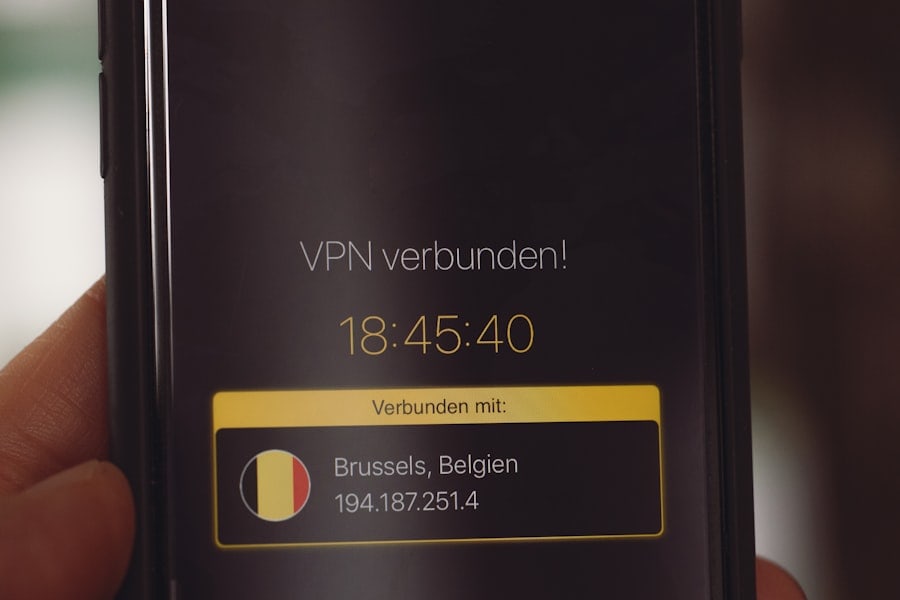Zero Trust Network Access (ZTNA) is a security framework designed to address vulnerabilities in traditional network security approaches. Unlike conventional models that rely on perimeter defenses, ZTNA operates on the premise that no user or device should be inherently trusted, even within the corporate network. This approach requires continuous authentication and authorization for all users and devices before granting access to network resources.
ZTNA adheres to the principle of least privilege, granting users access only to the specific resources necessary for their job functions. This minimizes potential damage from compromised accounts or devices. The framework also incorporates micro-segmentation, dividing networks into smaller, isolated segments to contain potential threats.
Key technologies employed in ZTNA include encryption, multi-factor authentication, and continuous monitoring. These measures ensure that only authorized users and devices can access the network. By implementing ZTNA, organizations can significantly reduce their attack surface and enhance their overall security posture.
Key Takeaways
- ZTNA is a security model that verifies every user and device trying to access a network, regardless of whether they are inside or outside the network perimeter.
- Implementing ZTNA can lead to improved security, reduced risk of data breaches, and better control over network access.
- ZTNA enhances security by providing continuous verification, least privilege access, and micro-segmentation to limit lateral movement of threats.
- Key components of ZTNA include identity-based access, secure connectivity, and policy enforcement based on user and device attributes.
- Implementing ZTNA in your organization requires careful planning, stakeholder buy-in, and a phased approach to deployment.
The Benefits of Implementing ZTNA
Enhanced Security
One of the primary advantages of ZTNA is improved security. By adopting a zero-trust approach, organizations can better safeguard their sensitive data and resources from unauthorized access. This is particularly crucial in today’s threat landscape, where cyber attacks are becoming increasingly sophisticated and targeted.
Increased Flexibility and Agility
Another significant benefit of ZTNA is increased flexibility and agility. Traditional network security measures can be rigid and cumbersome, making it difficult for users to access the resources they need to perform their jobs. In contrast, ZTNA allows for more granular control over access permissions, making it easier for users to securely access the resources they need from anywhere, at any time.
Achieving Compliance and Improving Security Posture
ZTNA can also help organizations achieve compliance with industry regulations and standards. By implementing strong authentication and access controls, organizations can demonstrate to auditors and regulators that they are taking the necessary steps to protect their sensitive data and resources. Overall, implementing ZTNA can help organizations improve their security posture, increase flexibility and agility, and achieve compliance with industry regulations and standards.
How ZTNA Enhances Security

ZTNA enhances security in several ways. One of the key ways it does this is by implementing a least privilege access model. This means that users are only given access to the resources they need to perform their job functions, and nothing more.
By limiting access in this way, organizations can reduce the potential damage that can be caused by a compromised user account or device. ZTNA also enhances security by incorporating the concept of micro-segmentation. This involves dividing the network into smaller, isolated segments to limit the spread of threats.
By isolating different parts of the network from each other, organizations can contain any potential breaches and prevent attackers from moving laterally within the network. In addition to these principles, ZTNA also leverages technologies such as encryption and multi-factor authentication to ensure that only authorized users and devices are able to access the network. By encrypting data both at rest and in transit, organizations can protect their sensitive information from unauthorized access.
Multi-factor authentication adds an extra layer of security by requiring users to provide multiple forms of verification before they can access the network. Overall, ZTNA enhances security by implementing a least privilege access model, incorporating micro-segmentation, and leveraging technologies such as encryption and multi-factor authentication.
Key Components of ZTNA
| Key Components | Description |
|---|---|
| Zero Trust Policy | Defines the access control policies based on identity, device, and location. |
| Identity and Access Management (IAM) | Manages user identities and their access to resources through authentication and authorization. |
| Micro-Segmentation | Divides the network into smaller segments to reduce the attack surface and limit lateral movement. |
| Multi-Factor Authentication (MFA) | Requires multiple forms of verification to authenticate users, such as passwords, biometrics, or tokens. |
| Continuous Monitoring | Constantly monitors user and device behavior to detect and respond to potential threats. |
There are several key components of ZTNA that work together to create a secure and flexible network access model. One of the key components is identity-based access controls. This involves authenticating and authorizing users based on their unique identity, rather than their location or the network they are connecting from.
By doing so, organizations can ensure that only authorized users are able to access their resources. Another key component of ZTNA is continuous monitoring. This involves monitoring user and device behavior in real-time to detect any unusual or suspicious activity.
By continuously monitoring the network, organizations can quickly identify and respond to potential security threats before they can cause any damage. Encryption is also a critical component of ZTNBy encrypting data both at rest and in transit, organizations can protect their sensitive information from unauthorized access. This helps to ensure that even if an attacker is able to gain access to the network, they will not be able to read or manipulate any of the data they find.
Finally, multi-factor authentication is another key component of ZTNBy requiring users to provide multiple forms of verification before they can access the network, organizations can add an extra layer of security to their access controls. Overall, the key components of ZTNA include identity-based access controls, continuous monitoring, encryption, and multi-factor authentication.
Implementing ZTNA in Your Organization
Implementing ZTNA in an organization requires careful planning and consideration. One of the first steps in implementing ZTNA is to conduct a thorough assessment of the organization’s current network infrastructure and security posture. This will help to identify any potential weaknesses or areas for improvement.
Once the assessment has been completed, organizations can begin to develop a roadmap for implementing ZTNThis may involve deploying new technologies and tools, updating existing security policies and procedures, and providing training for employees on how to use the new ZTNA system. It is also important for organizations to communicate with their employees about the changes that will be taking place as a result of implementing ZTNThis will help to ensure that everyone is aware of the new security measures and understands how they will be affected. Finally, organizations should regularly review and update their ZTNA implementation to ensure that it continues to meet their evolving security needs.
This may involve conducting regular security assessments, updating access controls, and providing ongoing training for employees. Overall, implementing ZTNA in an organization requires careful planning, communication with employees, and regular review and updates to ensure that it continues to meet the organization’s security needs.
Overcoming Challenges with ZTNA Adoption

While implementing ZTNA can bring many benefits to an organization, there are also several challenges that must be overcome. One of the key challenges is resistance to change from employees. Many employees may be resistant to new security measures or may not fully understand the need for them.
To overcome this challenge, organizations should provide clear communication about the benefits of ZTNA and provide training for employees on how to use the new system. Another challenge with ZTNA adoption is integrating it with existing network infrastructure and security measures. This may require deploying new technologies and tools, updating existing security policies and procedures, and ensuring that everything works together seamlessly.
To overcome this challenge, organizations should carefully plan and test their ZTNA implementation before fully deploying it. Additionally, organizations may face challenges with ensuring that their ZTNA implementation remains compliant with industry regulations and standards. To overcome this challenge, organizations should regularly review and update their ZTNA implementation to ensure that it continues to meet compliance requirements.
Overall, overcoming challenges with ZTNA adoption requires clear communication with employees, careful planning and testing of the implementation, and regular review and updates to ensure compliance with industry regulations and standards.
Future Trends in ZTNA Technology
Looking ahead, there are several future trends in ZTNA technology that are likely to shape the way organizations approach network security. One of these trends is the increasing use of artificial intelligence (AI) and machine learning (ML) in ZTNA systems. AI and ML can help organizations better detect and respond to potential security threats in real-time, improving overall security posture.
Another future trend in ZTNA technology is the integration of ZTNA with other security technologies such as cloud access security brokers (CASBs) and secure web gateways (SWGs). By integrating these technologies with ZTNA, organizations can create a more comprehensive and seamless security environment that protects against a wide range of threats. Furthermore, as more organizations embrace remote work and bring your own device (BYOD) policies, there will likely be a greater emphasis on securing access for remote users and devices.
This may involve developing new technologies and tools specifically designed for securing remote access in a zero trust environment. Overall, future trends in ZTNA technology are likely to include increased use of AI and ML, integration with other security technologies, and a greater emphasis on securing remote access for users and devices. In conclusion, Zero Trust Network Access (ZTNA) is a security model designed to address the shortcomings of traditional network security measures by assuming that no user or device should be trusted by default.
Implementing ZTNA brings several benefits such as improved security posture, increased flexibility and agility, and compliance with industry regulations. It enhances security through least privilege access model, micro-segmentation, encryption, multi-factor authentication, identity-based access controls, continuous monitoring among others. Implementing ZTNA requires careful planning, communication with employees, regular review and updates while overcoming challenges such as resistance to change from employees or integrating it with existing network infrastructure.
Future trends in ZTNA technology include increased use of AI/ML, integration with other security technologies such as CASBs/SWGs, securing remote access for users/devices among others.
If you are interested in learning more about the privacy and security concerns in the metaverse, you should check out this article on challenges and opportunities in the metaverse. It discusses the potential risks and benefits of virtual environments and how they can impact privacy and security. This is particularly relevant to the concept of zero trust network access (ZTNA) as it relates to ensuring secure access to virtual environments.
FAQs
What is Zero Trust Network Access (ZTNA)?
Zero Trust Network Access (ZTNA) is a security framework that requires all users, devices, and applications to be authenticated and authorized before they can access a network. It assumes that threats exist both inside and outside the network, and aims to secure every connection regardless of location.
How does ZTNA work?
ZTNA uses a “never trust, always verify” approach to security. It verifies the identity and trustworthiness of users and devices before granting access to applications and resources. This is typically done through a combination of user and device authentication, as well as continuous monitoring and access controls.
What are the benefits of ZTNA?
Some of the benefits of ZTNA include improved security posture, reduced attack surface, better visibility and control over network access, and the ability to enforce least privilege access. It also enables secure access for remote and mobile users, as well as third-party vendors and partners.
What are some key components of ZTNA?
Key components of ZTNA include identity and access management (IAM) systems, multi-factor authentication (MFA), continuous monitoring and risk assessment, policy-based access controls, and secure connectivity options such as VPNs and software-defined perimeters (SDPs).
Is ZTNA the same as traditional VPNs?
No, ZTNA is not the same as traditional VPNs. While VPNs provide secure access to a network, they often grant broad access once connected. ZTNA, on the other hand, enforces granular access controls based on user identity, device trustworthiness, and other contextual factors, providing a more secure and flexible approach to network access.











Leave a Reply